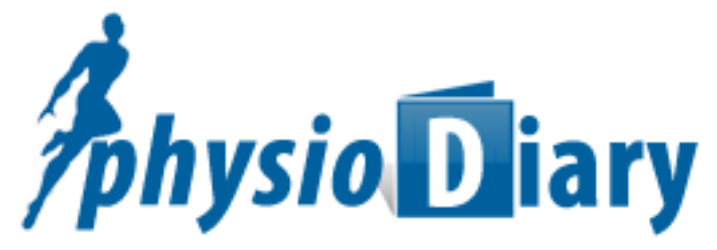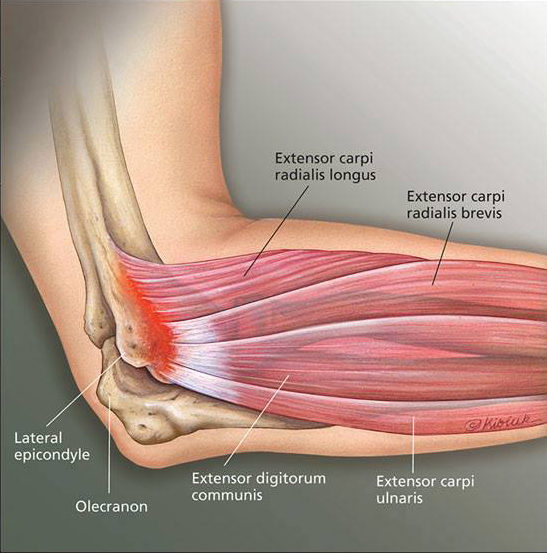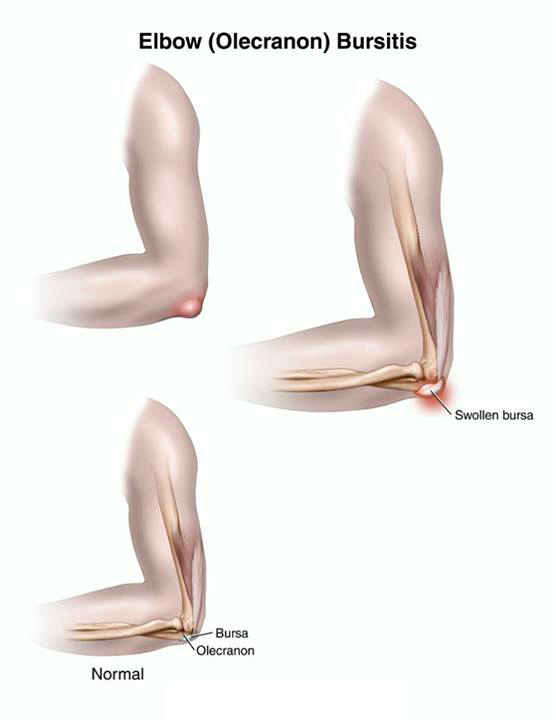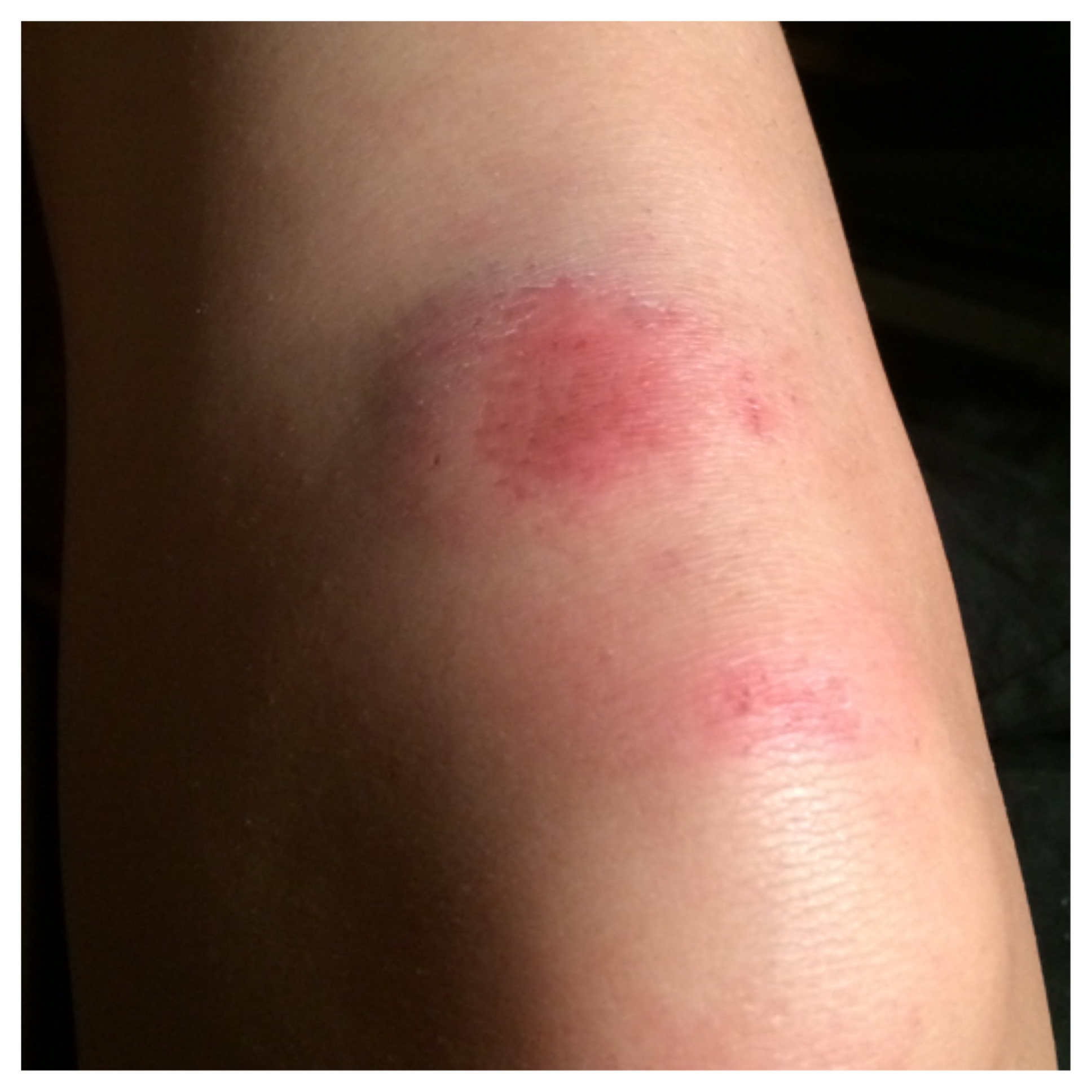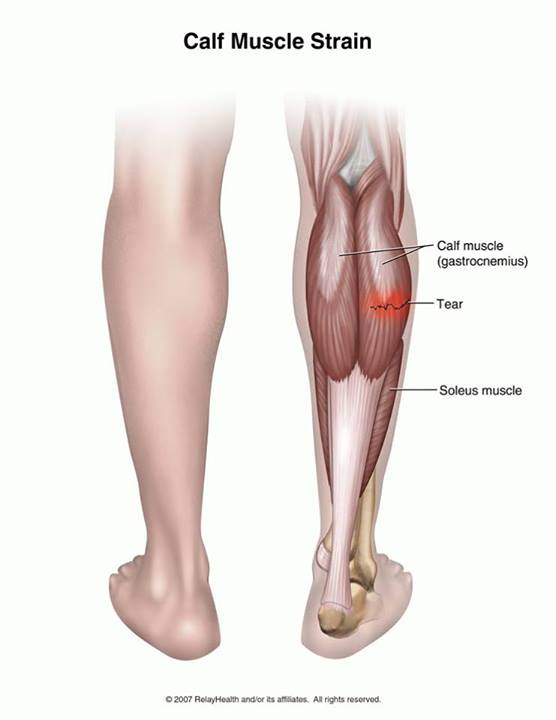Triceps Tendon Injury
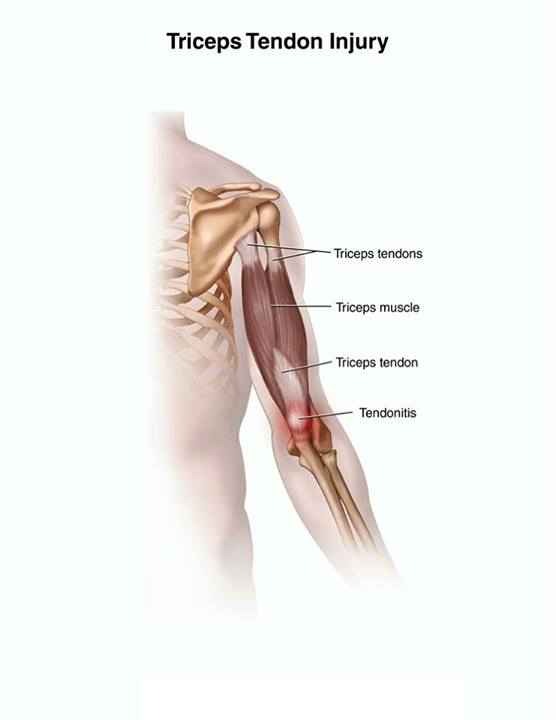
What is a triceps tendon injury?
A strain is a stretch or tear of a muscle or tendon. Tendons, are strong bands of connective tissue that attach muscle to bone. When a tendon is acutely injured it is called a strain. Tendonitis is when a tendon is inflamed. When there are micro-tears in a tendon from repeated injury it is called tendinosis. The term tendinopathy refers to both inflammation and micro-tears.
Your triceps muscle, which acts to straighten your arm, is attached to the bony bump at the back of your elbow by a large tendon. Triceps tendinopathy causes pain in the back part of the upper arm near the point of your elbow.
How does it occur?
Triceps tendinopathy occurs from overuse of the upper arm and elbow, especially in activities like throwing and hammering. It may also be caused by a direct blow to the triceps muscle or tendon. A triceps strain can occur with a forceful straightening of your arm or elbow.
What are the symptoms?
Symptoms may include:
Pain when you straighten your elbow or fully bend your elbow
Tenderness at the triceps muscle and tendon
Swelling near the point of the elbow
How is it diagnosed?
Your healthcare provider will review your history and examine your arm and elbow. You may have an X-ray to check for bone chips at the point of your elbow.
How is it treated?
To treat this condition:
Put an ice pack, gel pack, or package of frozen vegetables, wrapped in a cloth on the area every 3 to 4 hours, for up to 20 minutes at a time.
You could also do ice massage. To do this, first freeze water in a Styrofoam cup, then peel the top of the cup away to expose the ice. Hold the bottom of the cup and rub the ice over the injured area for 5 to 10 minutes. Do this several times a day while you have pain.
Take an anti-inflammatory medicine such as ibuprofen, or other medicine as directed by your provider. Nonsteroidal anti-inflammatory medicines (NSAIDs) may cause stomach bleeding and other problems. These risks increase with age. Read the label and take as directed. Unless recommended by your healthcare provider, do not take for more than 10 days.
Wear a strap around the lower part of your triceps during activities that cause discomfort as directed by your provider.
Follow your provider’s instructions for doing exercises to help you recover.
When can I return to my normal activities?
Everyone recovers from an injury at a different rate. Return to your activities depends on how soon your arm recovers, not by how many days or weeks it has been since your injury has occurred. In general, the longer you have symptoms before you start treatment, the longer it will take to get better. The goal is to return to your normal activities as soon as is safely possible. If you return too soon you may worsen your injury.
You may return to your normal activities when:
You no longer have tenderness or swelling at your triceps muscle or tendon.
Your injured arm is as strong as your uninjured arm.
You have full range of motion in your injured arm compared to your uninjured arm.
How can triceps tendon injuries be prevented?
The best way to prevent triceps tendinopathy is to avoid overuse and forceful movements of your upper arm and elbow. It is important to recognize early symptoms so you do not make your injury worse by overactivity.
Rehabilitation:
You may do all of these exercises right away.
French stretch: Stand with your fingers clasped together and your hands high above your head. Stretch by reaching down behind your head and trying to touch your upper back while keeping your hands clasped. Keep your elbows as close to your ears as possible. Hold this position for 15 to 30 seconds. Repeat 3 times.
Triceps towel stretch: Stand with your injured arm over your head holding the end of a towel. Put your other arm behind your back and grab the towel. Stretch your top arm behind your head by pulling the towel down toward the floor with your uninjured arm. Keep the elbow of your injured arm as close to your ear as possible. Hold for 15 to 30 seconds. Repeat 3 times.
Towel resistance exercise: Stand with your injured arm over your head holding the end of a towel. Put your other arm behind your back and grab the towel. Lift the hand of your injured arm toward the ceiling while pulling down on the towel with your other hand. Keep the elbow of your injured arm as close to your ear as possible. Hold for 10 seconds. Repeat 10 times.
French press: Sit and hold a small weight or dumbbell with both hands as if it were a baseball bat. Reach your arms over your head toward the ceiling. Bending your elbows, slowly lower the weight behind your head until the weight touches your upper back. Lift the weight up over your head and reach toward the ceiling again. Do 2 sets of 15 repetitions.
Modified push-up: Get onto your hands and knees, with your hands directly below your shoulders. Slowly bend your arms and lower yourself toward the floor, being careful to keep your spine straight. When you can do 2 sets of 15 easily, do this with your feet off the floor. Gradually progress to doing regular push-ups with your legs out straight.
Triceps kick back: Lean forward with the hand of your uninjured arm resting on a table or chair for support. Hold a weight with the hand of your injured arm. Keep the elbow of your injured arm against your side. Your arm should be bent at a 90-degree angle with the upper arm parallel to the floor. Move your forearm back until it is straight and also parallel to the floor. Then bring it back to the starting position. Do 2 sets of 15 repetitions.
